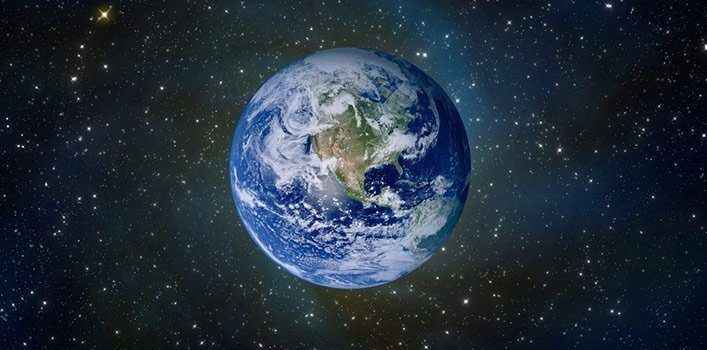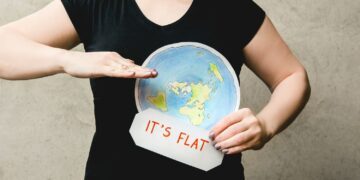Day by day, we live our lives marked by the rotation of our planet, giving us our beautiful sunrises and sunsets.
But have you ever wondered about the planet we live on, the Earth?
Have you ever wondered what it’s made of? Or how much it weighs?
Maybe you’ve wondered why we have a leap year. Or perhaps you’ve never really given it a passing thought.
Here are 30 interesting facts about our brilliant planet for those of you who want to learn something new!
The planet Earth weighs approximately 5,974,000,000,000,000,000,000,000 kilograms (nearly 6 septillion kg), that’s roughly the same amount of weight as 54,807,339,449,541,284,403 (approx 55 quintillion) Blue Whales – the heaviest creature on the Earth itself!
Contrary to popular belief, it does not take the Earth 24 hours to complete a single rotation; it actually takes 23 hours, 56 minutes, and 4 seconds to complete a rotation. Astronomers call this a sidereal day.
A year on Earth is not 365 days, as widely thought, but rather 365.2564 days. The extra 0.2564 days is added onto February once every four years, which is known as a leap year.
Ever wondered why people call the Earth the Blue Planet? That’s because 70% of the Earth’s surface is covered with water!
Of the 70% of water covering the Earth, only 3% is fresh, and the other 97% is salted.
Of this 3%, more than 2% resides in ice sheets and glaciers, meaning less than 1% is in lakes and rivers.
Due to the amount of water covering the Earth, it would be one of the brightest planets to look upon from a distance due to how the water reflects the Sun’s rays.
The Earth consists of 3 different layers: the Crust, The Mantle, and The Core. And each of these three different layers is made up of different elements.
The Crust consists of 32% Iron, 30% Oxygen, 15% Silicon, 14% Magnesium, 3% Sulphur, and 2% Nickel – which totals 96%. The other 4% is made up of trace amounts of Calcium, Aluminium, and other miscellaneous elements.
Before I tell you what the rest of the Earth’s layers consist of, here’s an interesting side-fact about the Earth’s Crust: it consists of different plates floating perpetually on the Earth’s mantle, moving at the same rate that a person’s fingernails grow!
On an elemental level, the Mantle consists of 44.8% Oxygen, 21.5% Silicon, and 22.8 Magnesium, although it also contains trace amounts of Iron, Aluminium, Calcium, Sodium, and Potassium. However, these elements are all bound together in the rocks that make up the Earth’s Mantle.
The Mantle is the largest layer of the Earth, approximately 2,970 km thick – this makes up about 84% of the Earth’s total volume.
The Earth’s core consists of two layers, an outer layer, and an inner layer. Although the specific percentages are unknown, the outer and inner layers of the Earth’s Core consist mainly of Iron and Nickel.
The outer layer of the Earth’s core is believed to be liquid, whereas the inner layer of the Core is believed to be a solid as hot as the Sun!
Due to the unique Nickel-Iron properties of the Earth’s Core, when coupled with its rotation, The Earth is surrounded by a powerful magnetic field that protects it from the effects of Solar Wind.
In the past, there have been many misconceptions about the Earth, such as when people thought it was the center of the Solar System and that all other planets orbited it! Or when they thought it was flat and that a person could sail off the edge by sailing over the horizon!
The Earth’s rotation is gradually slowing down. However, it is slowing down so very minimally (approximately 17 milliseconds per hundred years) that it will be about 140 million years before the Earth experiences 25-hour days.
Of all the planets in our solar system, the Earth is the most dense, with a density of roughly 5.52 grams per cubic centimeter. The second densest planet in our solar system is Mercury, with a density of 5.427 grams per cubic centimeter.
The Earth is the only planet in our solar system not named after either a Greek or Roman God.
The Earth is associated with the Goddess Terra Mater (Gaea in Greek Mythology), who was the first Goddess on Earth and the mother of Uranus.
The name Earth comes from a combination of Old English and Germanic and is derived from “eor(th)e” and “ertha,” which means “ground.”
Earth is the only planet in our solar system to have water in all three of its forms (Liquid, Solis & Gas).
One-third of the Earth’s surface is either partially or totally desert.
The Earth is struck by lightning 100 times per second – that’s 8.6 million times per day!
The Earth is the only place in our solar system where a Solar Eclipse can happen.
The Queen of the U.K. is the legal owner of one-sixth of the Earth’s land surface!
The Earth is actually not round in shape – it is geoid. This is because the rounded shape has a slight bulge towards the equator which is caused by the Earth’s rotation.
Although life (as we know it) has only existed on Earth for 150 – 200 million years, it is theorized that the Earth itself is almost 5 billion years old!
The Earth’s axis is on a tilt of 23.4 degrees.
Theoretically, if you drilled a tunnel straight through the Earth and jumped in, it would take you about 42 minutes to get to the other side!
Earth is the third planet from the Sun and the only one we currently call home.
What a home it is; our planet always surprises us in ways we could never imagine.
Just take a moment to step back and realize how lucky we are to be a part of this fantastic place.

















